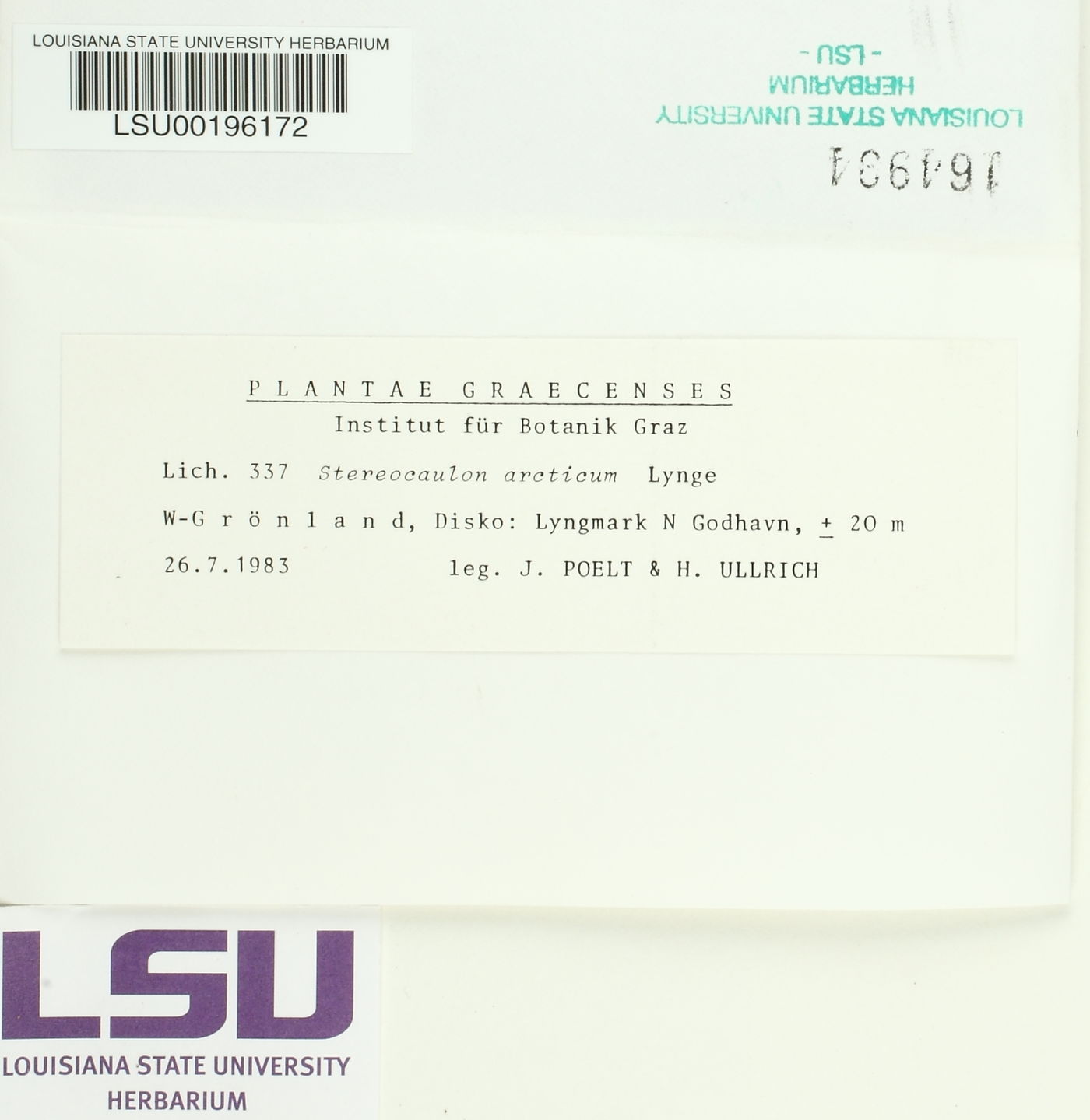
Consortium of Lichen Herbaria
- building a Global Consortium of Bryophytes and Lichens as keystones of cryptobiotic communities -
- Home
- Search
- Images
- Species Checklists
- US States: O-Z >
- US National Parks
- Central America
- South America
- US National Parks
- Southern Subpolar Region
|
|
|
|
Family: Stereocaulaceae
|
Thompson, J., 1984. American Arctic Lichens: The Macrolichens. Primary thallus disappearing, of small granules; pseudopodetia in dense tufts 1-3 cm tall, thickly branched toward the tips, ashy to blackened, covered with discontinuous coarse gray tomentum dispersed in patches, decayinj and blackening toward the base; very fragile a: compared with S. vesuvianum; phyllocladia densf toward the tops, when young distinctly peltati with greenish centers and pale margins, con cave, slightly more granulose than in S. vesuvianum; cephalodia lacking cortex, botryose. small, dark red-brown, containing Nostoc. Central medullary hyphae dense, pachydermatous, 8—10 µ. thick, parallel, exterior or loosely tomentose pachydermatous hyphae 6-12 µ thick; cortex of phyllocladia to 50 µ thick, gelatinous, the hyphae indistinct but almost par-aplectenchymatous, the cells to 12 µ broad. Apothecia rare, lateral, sessile or short-stalked, flat when young, becoming convex, small, to 1 mm broad; disk epruinose, dark chestnut, dull, becoming emarginate; cortical hyphae in perpendicular layer 25-65 µ thick; the hyphae 5-6 µ, pachydermatous; the hypothecium grading into the cortex; hymenium thin, 50 µ, upper part yellow-brown; paraphyses scarcely united, tips clavate, 3-3.5 µ thick; fertile asci rare; spores straight, subcy-lindrical to fusiform, 1—3(—5) septate, 18-30 x 2.5-3 µ. (Fertile characters based on Lynge 1938.) Reactions: K+ yellow, P+ yellow to orange. Hymenium 1+ blue turning dirty yellowish brown, apices of asci persistently blue. Contents: atranorin, stictic acid, small amounts norstictic acid (Lamb 1977). This species grows upon soil and in meadows and on gravel. It is boreal-arctic and circumpolar according to Lamb (1977). |
Powered by Symbiota












